Discover 11 hidden attractions, cool sights, and unusual things to do in Covington (United States). Don't miss out on these must-see attractions: Cathedral Basilica of the Assumption, Mother of God Roman Catholic Church, and Linden Grove Cemetery. Also, be sure to include Mainstrasse Village in your itinerary.
Below, you can find the list of the most amazing places you should visit in Covington (Kentucky).
Table of Contents
Cathedral Basilica of the Assumption
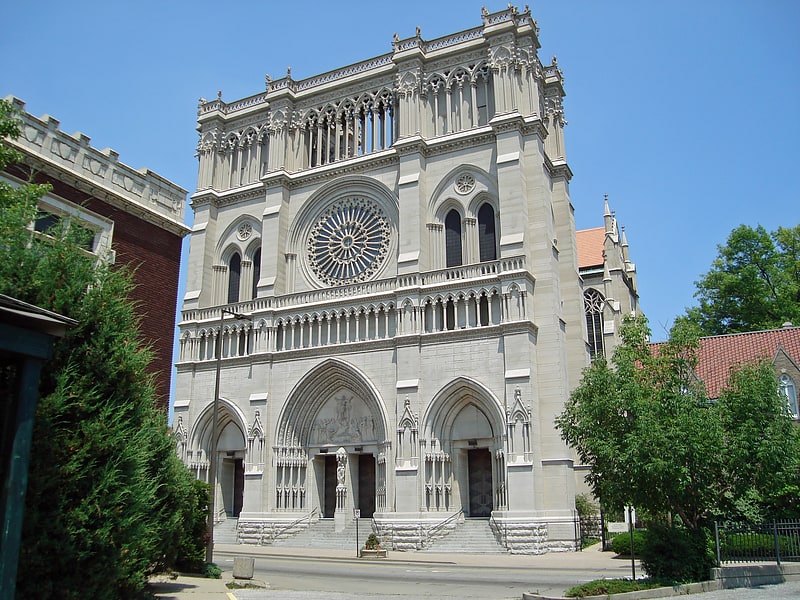
Minor basilica in Covington, Kentucky. The Roman Catholic St. Mary's Cathedral Basilica of the Assumption in Covington, Kentucky, is a minor basilica in the United States. Construction of the cathedral began under the Diocese of Covington's third bishop, Camillus Paul Maes, in 1895 to replace an 1834 frame church that was inadequate for the growing congregation. Pope Pius XII elevated the cathedral to the rank of minor basilica December 8, 1953.[1]
Address: 1140 Madison Ave, 41011 Covington (Covington)
Mother of God Roman Catholic Church

Parish church in Covington, Kentucky. Mother of God Parish is a parish church of the Roman Catholic Diocese of Covington, Kentucky, United States, located at 119 West 6th Street in Covington. The official title of the parish is The Assumption of Mary, Mother of God, Parish. The church was listed on the National Register of Historic Places in 1973. It was also included in the Mutter Gottes Historic District which was listed on the National Register in 1980.
This historic church features twin renaissance towers and murals by famous Vatican artist Johann Schmitt, an early teacher of Frank Duveneck, who was baptised in the parish in 1848. In the spring of 1842, the German congregation purchased a lot at the southwest corner of 6th and Washington streets. On this lot, a new church was constructed. Bishop Flaget of the Diocese of Louisville laid the cornerstone on April 14, 1842. The church was dedicated by the same bishop on October 10, 1842. The new church was brick and measured 100 x 50 feet. Transepts were added to the structure in 1851.
By the late 1860s the church building, not yet 30 years old, was already overcrowded. Planning therefore began for the construction of a new Mother of God Church. The old church building was demolished and ground was broken for the new Italian Renaissance Revival structure. The cornerstone of the new church was set in place on July 3, 1870 and the building was dedicated on September 10, 1871. The new Mother of God Church sported a large portico supported by four Corinthian columns, two large towers and a central dome topped with a lantern and cupola. In 1875 a magnificent Koehnken Organ was installed in the church balcony.
In 1891, the congregation celebrated the Silver Jubilee of the establishment of the parish. In preparation for this event, the interior of the church was completely remodeled. Additions included five large murals by Johann Schmitt, new hand-carved wood altars by the Schroder Brothers of Cincinnati and two imported stained glass windows from Mayer & Company of Munich.
On March 10, 1986, a tornado swept through Covington damaging the cupola of Mother of God Church. The congregation quickly rallied to rebuild the structure. However, while the structure was being repaired, welders accidentally set the dome on fire. Ultimately, the building was restored to its 1890 appearance at a cost of over a million dollars. The parish school merged with St John School, St Ann School, and Sts Boniface And James School in 1984 to form Prince Of Peace Academy housed at St John.[2]
Address: 119 W 6th St, 41011 Covington (Covington)
Linden Grove Cemetery
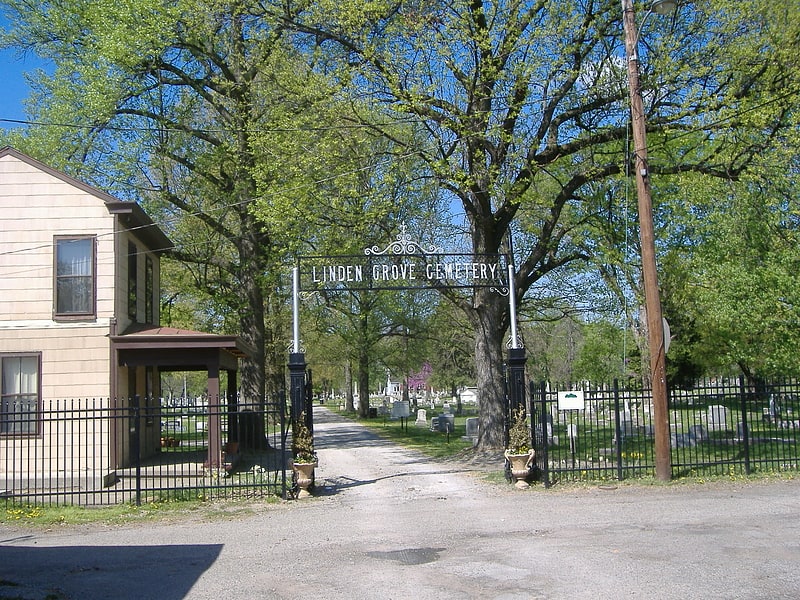
Cemetery in Covington, Kentucky. Linden Grove Cemetery is located along Holman Street, between 13th and 15th streets in Covington, Kentucky, United States. It is the second public cemetery in Covington, the city's first public burial ground being Craig Street Cemetery, which dates to 1815. Craig Street Cemetery closed in 1872. Most of the bodies were moved to Linden Grove.
Trustees of the nearby Western Baptist Theological Institute which was formed to train Baptist ministers founded the cemetery in 1842, and from the beginning allowed burials without regard to race or religion. The Western Baptist Theological Institute had been formed in 1833 to train Baptist ministers and at one time its grounds covered several hundred acres.
Some accounts say burials at Linden Grove began in 1842, but the Licking Valley Register reported on September 9, 1843, that elaborate plans had been proposed for dedicating "this beautiful spot of ground" on September 11. Plans called for music and talks by ministers and groups from Presbyterian, Episcopal and Methodist churches in Covington.
The writer described Linden Grove as about "60 acres of high table land, overlooking the city of Cincinnati and situated in the midst of the most quiet and romantic scenery." The newspaper reporter concluded, "A place like this, in the vicinity of Cincinnati, would be thronged with the admirers of nature and art thus happily combined." A later account said a large crowd attended the dedication ceremonies.
As early as May 1851, The Covington Journal was cautioning lot owners to get more involved in the operation of the cemetery and warned that indifference was sure to lead to problems. Another Covington Journal account on May 1, 1858, noted that since its opening, Linden Grove had had more than 2,000 burials. Especially heavy years were 1850 and 1851, when cholera swept through the area. Those years there were more than 260 burials, compared to 160 in most other years.
Vandalism had become enough of a problem by 1859 that newspaper advertisements were run in the Covington Journal warning of fines of $5 to $50 for damaging grave sites. By 1868, Covington Journal accounts said another public burial site might soon be needed for Covington. The December 26 story said the Craig Street site had been full for several years and Linden Grove was quickly filling up. Highland Cemetery in Fort Mitchell would later be dedicated on June 26, 1869, to handle those needs.
Alben Barkley, the former Vice President and U.S. senator, was the guest speaker at the 1953 Memorial Day ceremonies at Linden Grove. The Norman-Barnes Post of the American Legion served as Barkley's escort during the ceremonies. That Covington post later sponsored placement of a marker dedicated to Civil War veterans buried at Linden Grove.
Among those moved to Linden Grove was Thomas Kennedy, one of the founders of Covington. The cemetery's residents also include three former Northern Kentucky congressmen, including John G. Carlisle, namesake of an elementary school in Covington; William Wright Southgate; John W. Menzies; and William Evans Arthur.
Linden Grove is the resting place of many Civil War veterans, including eighteen in colored units of the United States Army. Union and Confederate soldiers are buried facing each other in uniform rows. Two monuments to the war, the Veteran's Monument in Covington and the GAR Monument in Covington, are inside the cemetery, and like the cemetery, are on the National Register of Historic Places.
The cemetery has been in receivership for half a century, with the city and Kenton County charged with overseeing it.
On September 8, 2006, the Kentucky Governor's Office of Local Development announced a grant of $23,863.00, to be combined with $44,000.00 from the City of Covington, $22,000.00 from the Kenton County Fiscal Court and $5,500.00 from the Cemetery. These monies will be used for new fencing on West 13th Street and Linden Avenue.
In 2003, $25,000 from the Cemetery Preservation Fund and $85,000 in local money was used to replace fencing along Kavanaugh Street.[3]
Address: 401 W. 13th St, Covington (Covington)
Mainstrasse Village
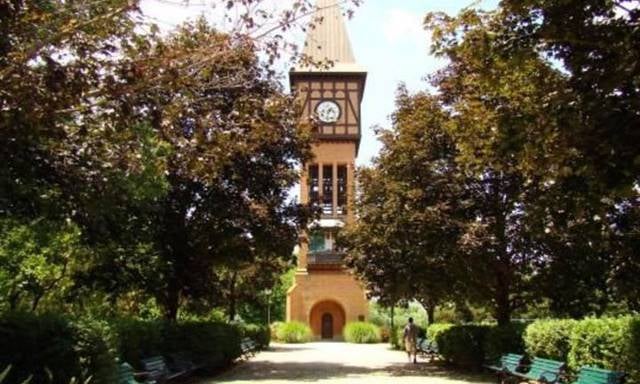
Historical place, Square
Address: 605 Philadelphia St, 41011-1240 Covington (Covington)
Trinity Episcopal Church

Building in Covington, Kentucky. Trinity Episcopal Church is located in Covington, Kentucky, Madison Avenue. This historic church was founded November 24, 1842, in a third floor of a brick building near the Covington market. The cornerstone of the first church was June 24, 1843 and the first service was on June 30, 1844. The church has served the people of Covington and Cincinnati, Ohio through wars and floods. The church is active today, with a large congregation at its Fourth and Madison Avenue location. The Rev. Peter D'Angio is the Rector and the Rev. Justin Gabbard is the associate Rector. It is the second largest parish in the Episcopal Diocese of Lexington.
Trinity Episcopal Church was placed on the National Register of Historic Places on March 1, 1982. This was because it is an excellent example of how medieval techniques in architectural design affected Episcopal church building in the United States in the 19th Century, in a style known as Gothic Revival.[4]
Address: 326 Madison Ave, 41011 Covington (Covington)
Behringer-Crawford Museum
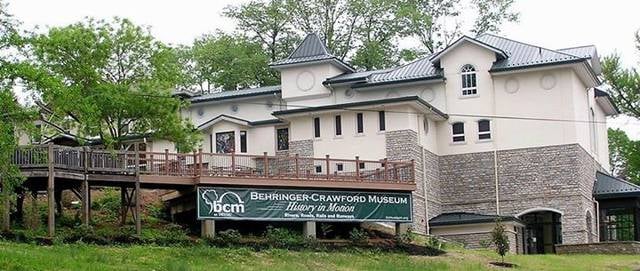
Specialty museum, Museum
Address: 1600 Montague Rd, 41011-5648 Covington (Covington)
The Ascent at Roebling's Bridge
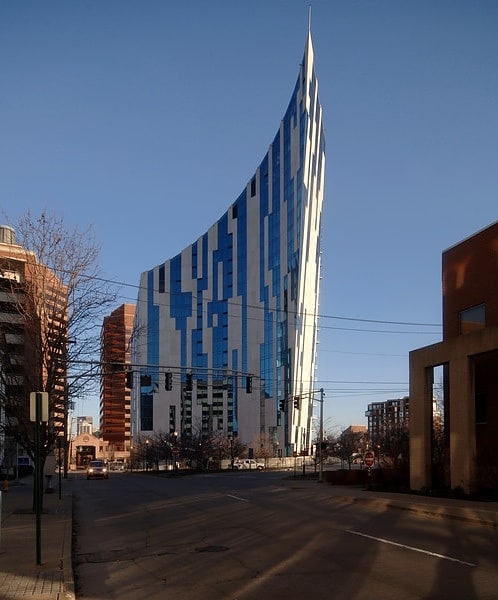
Building in Covington, Kentucky. The Ascent at Roebling's Bridge is a residential building in Covington, Kentucky, United States, in the greater Cincinnati area. Designed by Daniel Libeskind, the building sits along the Ohio River across from the Roebling Suspension Bridge. It was commissioned in 2004 and was completed in March 2008 at a cost of approximately $50 million. Many newspapers have associated the Ascent with a trend toward signature architecture for residential buildings.[5]
Address: 1 Roebling Way, Covington (Covington)
Railway Museum of Greater Cincinnati
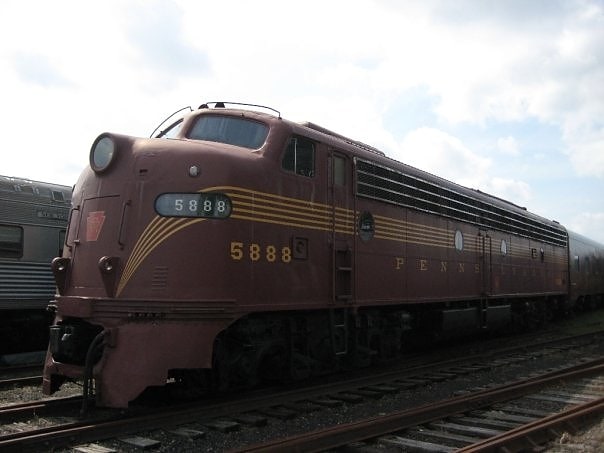
Museum in Covington, Kentucky. The Railway Museum of Greater Cincinnati is a railroad museum in Covington, Kentucky.[6]
Address: 315 W Southern Ave, 41015-1180 Covington (Covington)
Riverside Drive Historic District
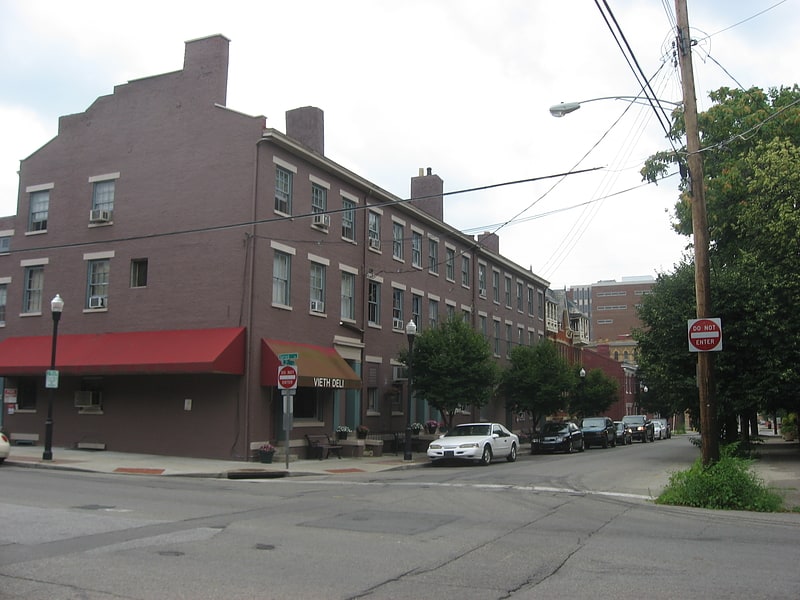
The Riverside Drive Historic District is a historic district located at the west bank of the confluence of the Licking River and the Ohio River in Covington, Kentucky, directly across from Cincinnati, Ohio.
Prior to the city of Covington's founding, George Rogers Clark used the area as a mustering spot for incursions against the Indians from Ohio who were raiding Kentucky, and then later for organizing troops for his Illinois campaign. It is believed that the first white settlers of the Greater Cincinnati area chose the Riverside Drive area for their settlement. Riverside Drive was a popular place to build the finest houses in Covington, with many still standing from the early 19th century. Over thirty of the buildings in the district are considered exceptional samples of their architectural style.
There are several independently notable buildings in the district. The Daniel Carter Beard Boyhood Home was the boyhood home of Daniel Carter Beard, founder of the Boy Scouts of America, and is a National Historic Landmark. The 1815-built Thomas Carneal House, the first brick house in Covington, is a Georgian-style domicile reminiscent of Italian architect Andrea Palladio; it still features a tunnel leading to the Licking River that allowed the owners to help slaves escape from their rightful owners as part of the Underground Railroad. Prominent visitors to the house included the Marquis de Lafayette, Henry Clay, Andrew Jackson, and Daniel Webster.
Seven bronze statues of prominent figures in the history of the area are placed in lifelike poses on riverside benches. These include James Bradley, Daniel Carter Beard, John James Audubon, and Chief Little Turtle.[7]
St. Augustine Church Complex
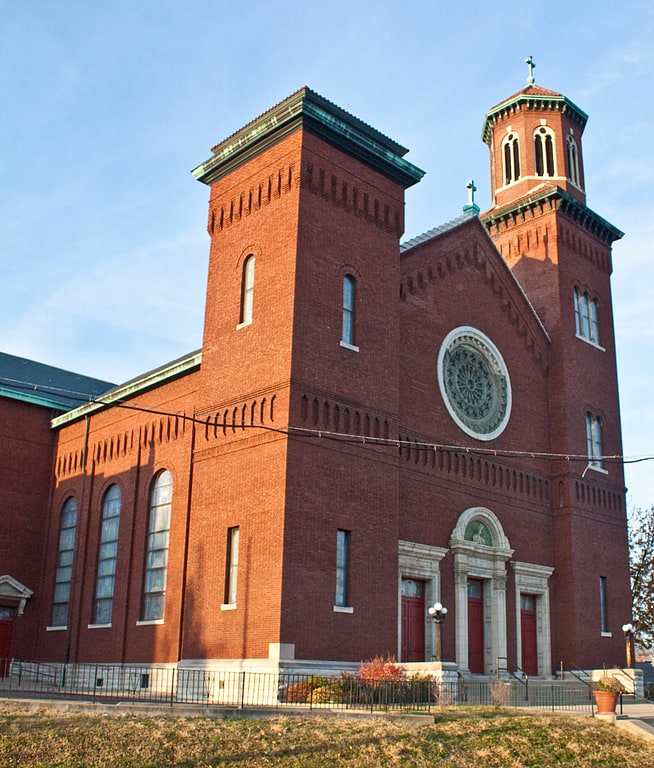
St. Augustine Catholic Church Complex is a historic church located at 1839 Euclid Avenue in Covington, Kentucky.
The history of the St. Augustine parish began with the immigration of Germans to the Northern Kentucky area in the 1840s, and cresting in the 1890s. The German influx of immigrants to the area was attributable to economic hardship, religious persecution and the harsh treatment by the Prussian government. In addition, advertising of attractive prices for pork played a large part in enticing the Germans to the Ohio River Valley of Northern Kentucky and Cincinnati.
Initial settlement concentrated in the Main Strasse neighborhood of Covington, but by the 1860s and 1870s, the Germans began to move into the southwestern part of the city, a separate entity known as the City of Central Covington. St. Augustine was the fifth Catholic parish established in Covington and the original St. Augustine church was built in 1870. The Reverend Father Joseph Goebbels led the church in the 1870s and organized a wire nail factory to pay back the debt incurred in constructing the church. The enterprise was not successful and a number of parishioners lost their life savings in the venture. The parish was returned to a sound financial footing by Father Paul Abeln who was pastor from 1883 until his death in 1911.
The existing church was designed by local architect David Davis (1865–1932), who also designed the 1910 Cathedral Basilica of the Assumption, Covington. Little is known of Davis, considering he designed two prominent churches in the city. Construction began on the Euclid Avenue structure in 1913 under the direction of Father William Kathman and the church was dedicated by Bishop Camillus P. Macs on December 20, 1914. The church stands 60' high, 52' wide, 92' in the transept and 160' long. Seating capacity is 1000. Its 100th anniversary was in 2018. The school held a celebration for that.
Construction of the existing school building, built of the same dark red brick as the church, began in 1915, and was completed in September 1916.[8]
Address: 1839 Euclid Ave, Covington (Covington)
Daniel Carter Beard Boyhood Home

Building in Covington, Kentucky. The Daniel Carter Beard Boyhood Home is a National Historic Landmark located in the Riverside Drive Historic District of Covington, Kentucky, overlooking the Licking River, across the Ohio River from Cincinnati, Ohio. The two-and-one-half story brick domicile, built in 1821 and one of the two oldest buildings in Kenton County, Kentucky, is the boyhood home of Daniel Carter Beard, a founder of the Boy Scouts of America. He was their National Scout Commissioner from its 1910 founding to his death in 1941.[9]